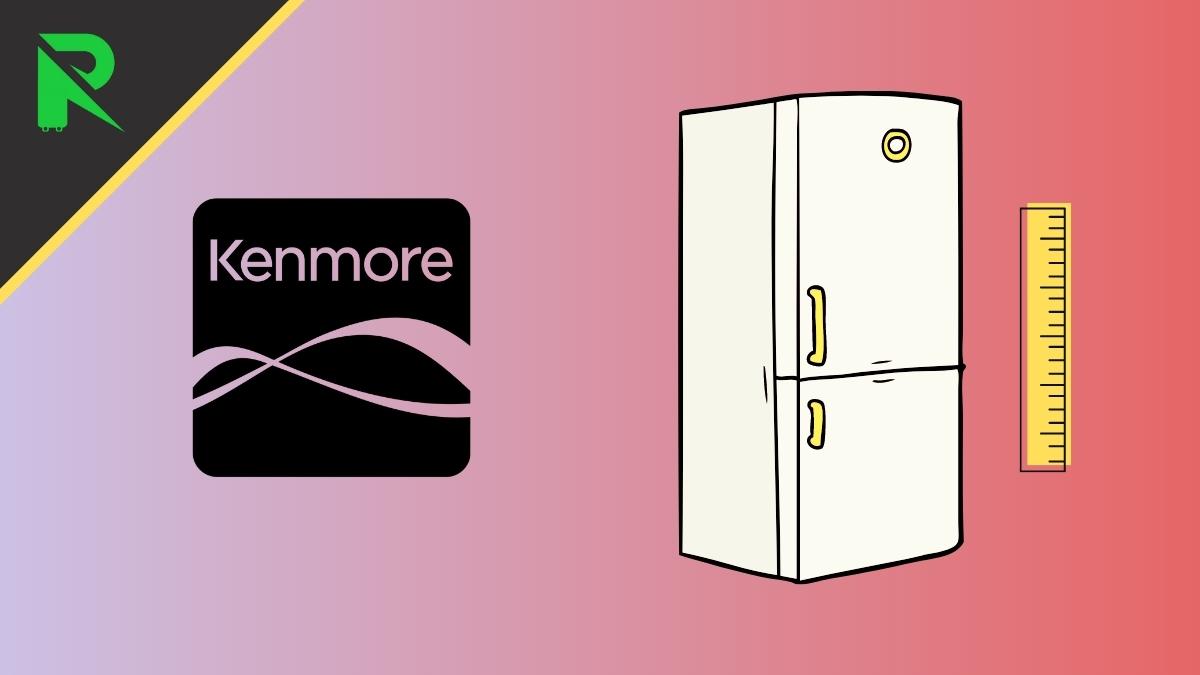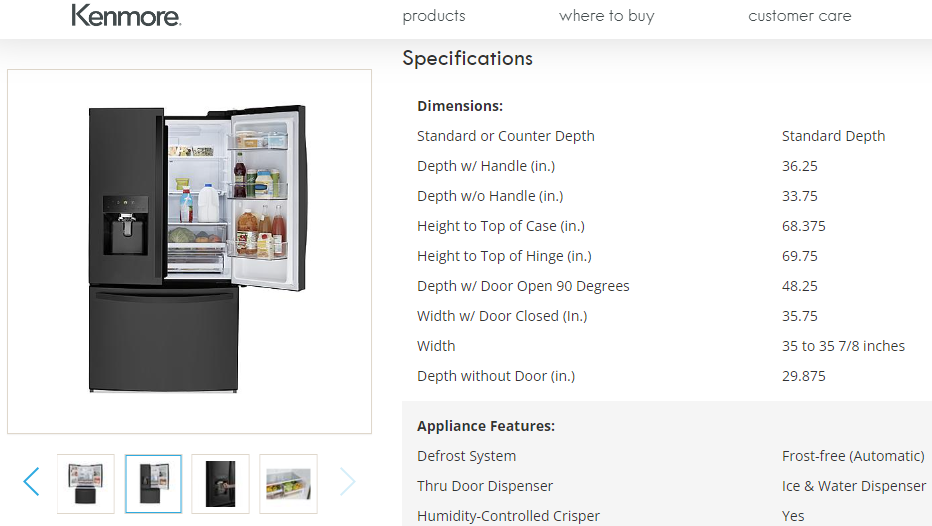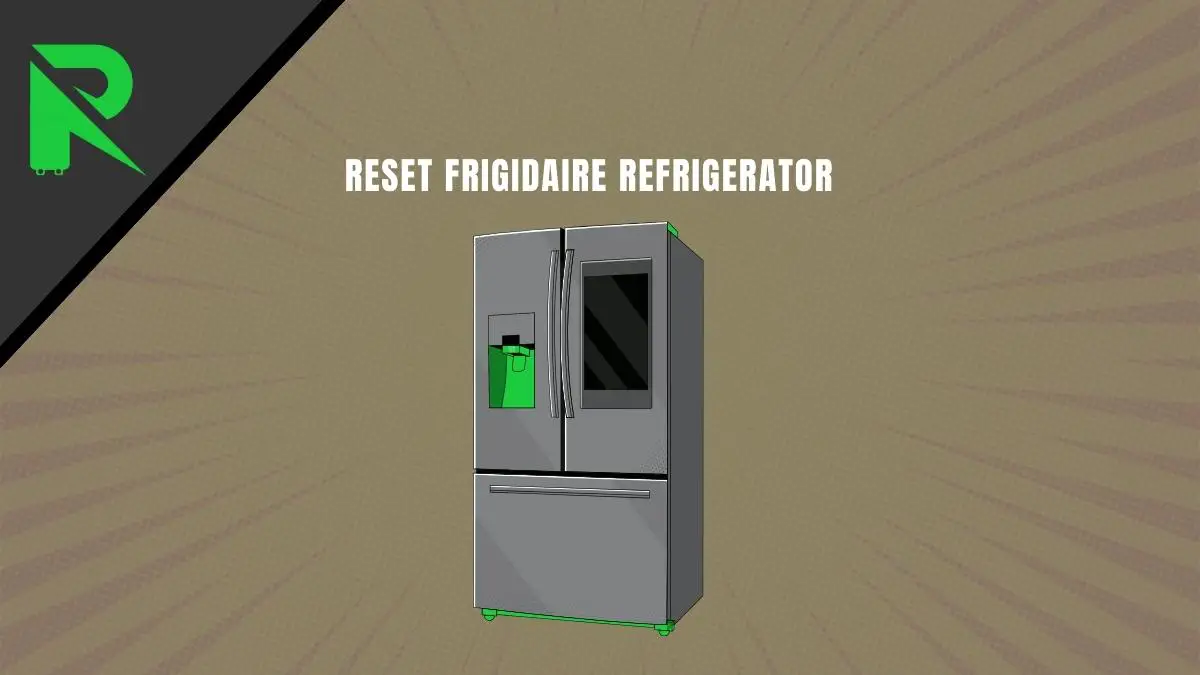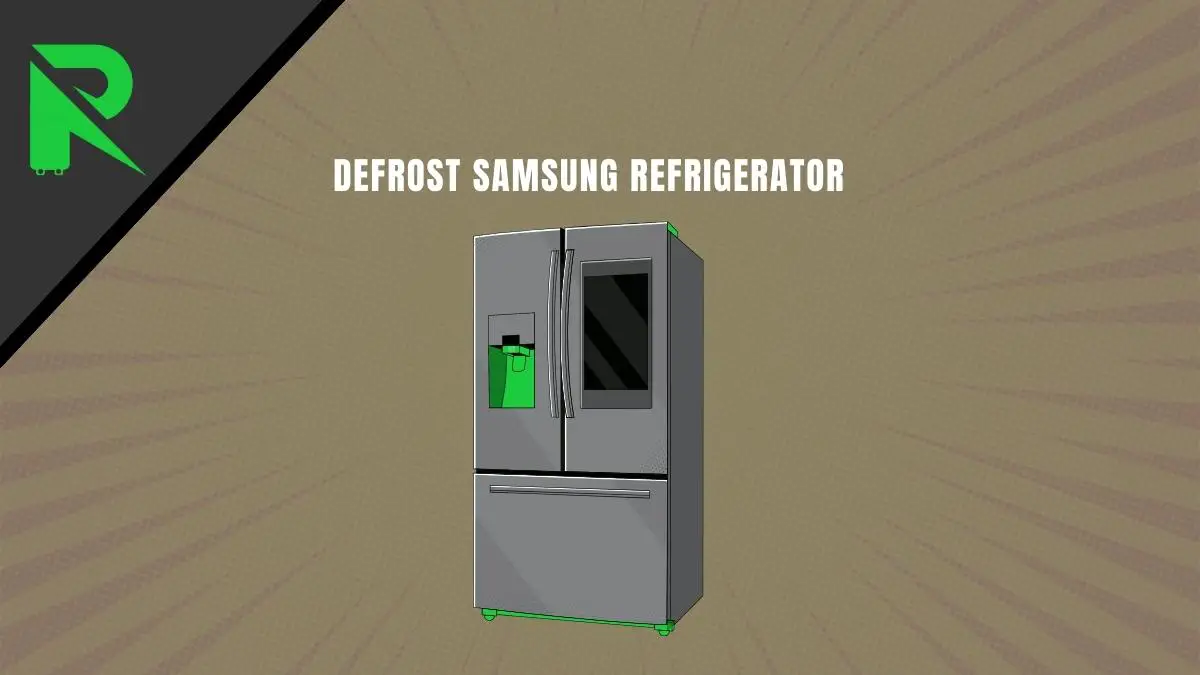Buying a refrigerator is an important decision, and one of the key factors to consider is the capacity or cubic feet of storage space. This determines how much food you can store inside. Kenmore refrigerators are a popular brand, but finding their size can be tricky compared to other brands that list capacity clearly on the model name. However, there are several ways to determine the cubic feet of your Kenmore refrigerator using the model number and other methods.
Where To Find The Model Number
The first step is locating the Kenmore refrigerator model number. Here are the common places to check:
- Inside the fridge: Look for a sticker or plate on the side wall or back wall with the model details. This is the most likely place.
- User manual: Check the front page or specs table for the model number.
- Warranty card: Model details are usually printed here.
- Product receipt/invoice: Retailers often list model numbers on purchase paperwork.
- Product box: Sometimes printed on the exterior or inside flap.
- Fridge door or handle: Occasionally engraved into the metal.
If you can’t find the model number, try looking up the serial number instead. This should also help identify the model.
Understanding The Model Number Format
Once you have the model number, look at the format. Kenmore models are around 5-10 digits long and may contain a mix of numbers and letters.
Some clues in the model can indicate size:
- Suffix with cubic feet: Some Kenmore fridges have a suffix matching capacity, like “106.53292500” (25 cu ft).
- Sequence indicates size: Higher numbers may denote larger capacity.
- Letters loosely relate to size: Certain starting letters match common sizes.
However, these trends are inconsistent across all models, so the model number alone doesn’t directly show the true capacity.
Search Using The Model Number
The easiest way to find the size is to take the model number and search online:
- Search the model on Google or another search engine. Results often list the capacity.
- Go to the official website and search for your model. Specs should be shown.
- Look up third-party appliance sites like Repair Clinic or PartSelect. Enter the model in their search bar.
- Check appliance forums like Houzz for posts about your Kenmore model. Users sometimes discuss capacity.
If your fridge was made for a retailer like Costco, search on their website instead of Sears.
Match The Model To Common Kenmore Sizes
Certain Kenmore models are very popular sellers, so their sizes are widely known:
- Kenmore 106: 20.6 cubic feet capacity. A side-by-side model.
- Kenmore 253: 18 cubic feet. More compact fridge.
- Kenmore 363: Around 21 cubic feet. Features top freezer.
- Kenmore 795: Approximately 22 cubic feet. French door style.
- Kenmore Elite: Ranges from 25-30 cubic feet for larger families.
If your model number is one of these major lines, you can assume it falls within the typical size range.
Contact The Manufacturer
If you can’t find the answer elsewhere, consider reaching out to the maker:
- Call Kenmore customer service at 1-844-553-6667 and provide the model number. They can look up the specs.
- Email Kenmore customer support from their website. Attach your model and serial numbers.
- Chat with a support agent online if that option is available. Get them to research your model.
- Social media: Tweet @Kenmore or post publicly on their Facebook page asking for help.
Kenmore should be able to confirm the capacity from their internal databases.
Estimate By Refrigerator Type
Even without the exact model, you can ballpark the size range by looking at the general type:
- Mini fridges: 1.5 to 5 cubic feet. Tiny apartment units.
- Compact refrigerators: 5 to 10 cubic feet. Small kitchens, offices, etc.
- Top freezer: 16 to 25 cubic feet for average households.
- Bottom freezer: 22 to 25 cubic feet. More storage than the top freezer.
- Side-by-side: 20 to 30 cubic feet. Very spacious interiors.
- French door: 25 to 35 cubic feet. Extra roomy with dual doors.
Measure Dimensions And Calculate Cubic Feet
For a DIY approach, take physical measurements:
Supplies needed: Tape measure, pen, paper, calculator.
Steps:
1. Open the fridge and measure the interior height, width, and depth in inches.
2. Multiply measurements to get cubic inch volume.
3. Divide by 1728 to convert cubic inches to cubic feet.
4. Round to the nearest tenth (xx.x) for estimated capacity.
This works for any refrigerator brand and is useful if the model number is hard to find.
Average dimensions for common styles:
- Top freezer: 65-70″ H x 28-32″ W x 28-34″ D
- Bottom freezer: 65-70″ H x 30-34″ W x 28-31″ D
- Side-by-side: 65-70″ H x 30-36″ W x 26-31″ D
- French door: 68-72″ H x 30-36″ W x 28-35″ D
Of course, measuring your actual unit will be more accurate than typical sizes.
Determine Age-to-Guess Capacity
Older fridges are usually smaller, while newer models have more cubic feet. If you know the approximate age, you can estimate the capacity range.
Ways to guess age:
- Style and features – Older looks and lack of modern tech suggest an older unit with a smaller size.
- Serial number – The first digit is often the year. So “352…” indicates made in the 2000s.
- Purchase paperwork – Receipt or warranty with date.
- Product sticker – Manufacturing date sometimes printed.
Fridge sizes by era:
- 1990s or earlier: Under 20 cubic feet for full-size top/bottom freezer units.
- Early 2000s: Around 20 to 25 cubic feet for major models.
- 2010s: 25 to 35 cubic feet for top-selling styles.
- 2020s: 30+ cubic feet for latest releases.
So, while not exact, the age gives a ballpark figure. Newer trends are bigger.
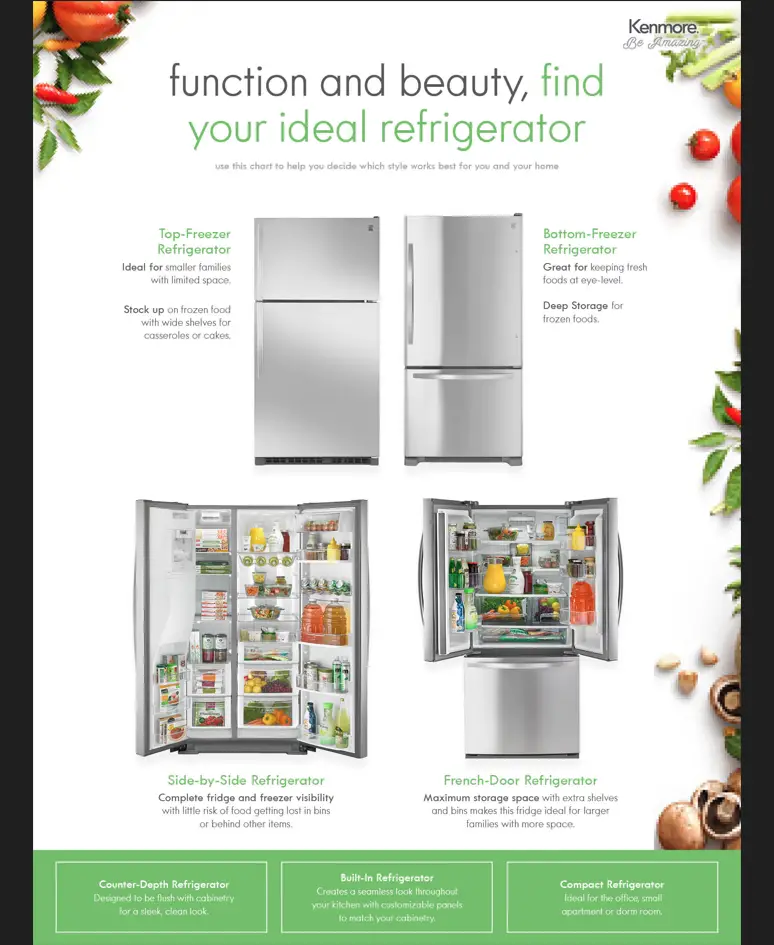
FAQs
1. What are typical Kenmore refrigerator dimensions?
- For full-size models, interior height ranges 65″-70″, width 28″-36″, and depth 26″-35″, depending on the configuration. Mini fridges can be under 25″ in all dimensions.
2. What refrigerators does Kenmore not make?
- Kenmore sources models from various appliance makers but doesn’t manufacture them directly. LG, Whirlpool, GE, Frigidaire, Samsung, etc. produce major lines.
3. Where should I look inside the fridge for the model number?
- Start by checking the sides, back wall, ceiling, and door frame/liner for a product sticker or metal plate with the model details.
4. What does the model number suffix mean?
- On some Kenmore fridges, the suffix matches the cubic feet capacity, like “106.53292500” = 25 cubic feet. However, this naming trend is not used consistently across all models.
5. Can Kenmore tell the age from the serial number?
- Yes, the first digit of the serial number often indicates the year of manufacture. You can contact Kenmore customer service, and they can decode the approximate age.
6. Can I determine the size of my Kenmore refrigerator by its serial number?
- No, the serial number typically contains information about the manufacturing date and place, not the size. Focus on the model number for details about the refrigerator’s size.
7. What does the size indicator in the model number represent?
- The size indicator is a set of numbers that represents the capacity or size of the refrigerator. It helps you understand the volume of the appliance in terms of storage space.
Conclusion
Determining cubic feet capacity isn’t always straightforward with Kenmore, but using the model number and other tricks can help narrow it down. Search online, check popular sizes, or measure dimensions to get an estimate. Reach out to the maker if needed to learn the specifications of your particular model.
While not as clear as some brands, some sleuthing will eventually reveal your Kenmore refrigerator’s true interior size. Then, you can decide if it fits your household needs or is time for an upgrade.
